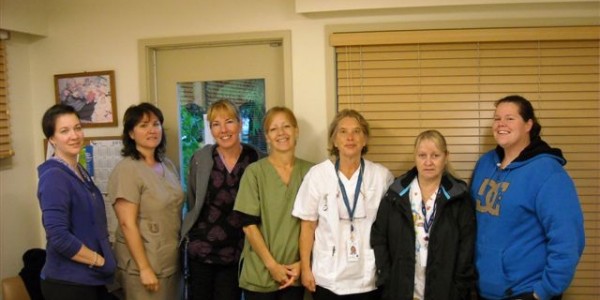Sunshine Coast staff using SLS to its full potential
At a time when incident reporting systems have become increasingly paramount to improving healthcare safety, a group of home support staff on British Columbia’s Sunshine Coast have risen to the top to overcome some interesting challenges with reporting patient safety events in VCH’s Safety Learning System (SLS).
In this digital era most people would agree that computers and the Internet have become integral components of our everyday lives. Indeed, this is one of the key benefits of SLS – it’s an online ‘tool’. It gives healthcare organizations the ability to eliminate paper-based forms and adopt a more sophisticated online safety event reporting and management system.
But for Community Health Workers (CHWs), quick and easy access to computers is often a challenge, turning technology, instead, into a significant stumbling block. How can healthcare workers report patient safety events into an online system without access to a computer?
Karen Inkpen is Manager of Home Care Services on the Sunshine Coast and she’s been a strong advocate of SLS since the beginning, appreciating its potential to improve patient safety and quality of care, and she recognized that a lack of computer access would be a barrier for home support staff.
“Until a couple years ago, reporting volumes in Home Care on the Sunshine Coast was very low,” she says. “We discovered that CHWs don’t go online during their work day and they often don’t have access to computers at all. This really affected our reporting volume and put us at a disadvantage. It’s difficult to improve quality of care for our clients if we don’t know what the challenges are. How do we know where we need to improve?”
Karen and a group of committed CHWs needed a practical, immediate solution, so they worked together to develop a paper version of the SLS safety event report form that CHWs could carry with them on their client visits.
After just a one-month trial period, feedback from CHWs was overwhelming positive! The average number of reports increased from four per month before the trial to 50 per month afterwards. “A few of these weren’t actually patient safety events,” says Karen. “But that was good because it helped us to support our CHWs by providing them with education and training about what to report in SLS.”
The final piece to the solution
And, what is the final piece to this creative solution? The help of some very special clerical staff. “We couldn’t have achieved this level of success without Esme and Erin,” she says. “They enter the paper forms into SLS and generate monthly status reports that we then share with CHWs all over the Sunshine Coast.”
Karen continually encourages her staff to report in SLS and strives to inspire a non-punitive reporting culture.
“I really believe in SLS and I commend our CHWs for coming up with a workable solution, I think they’re doing a great job. Now we can focus our quality improvement strategies and continue to provide optimal care for our residents.”
The team is now applying their findings from SLS to customize aspects of client care planning by trialing an “at the kitchen sink” exercise program and they plan to pull together a medication safety team to analyze root causes of medication events.
Congratulations to Karen, Esme, Erin and all the CHWs on the Sunshine Coast!



